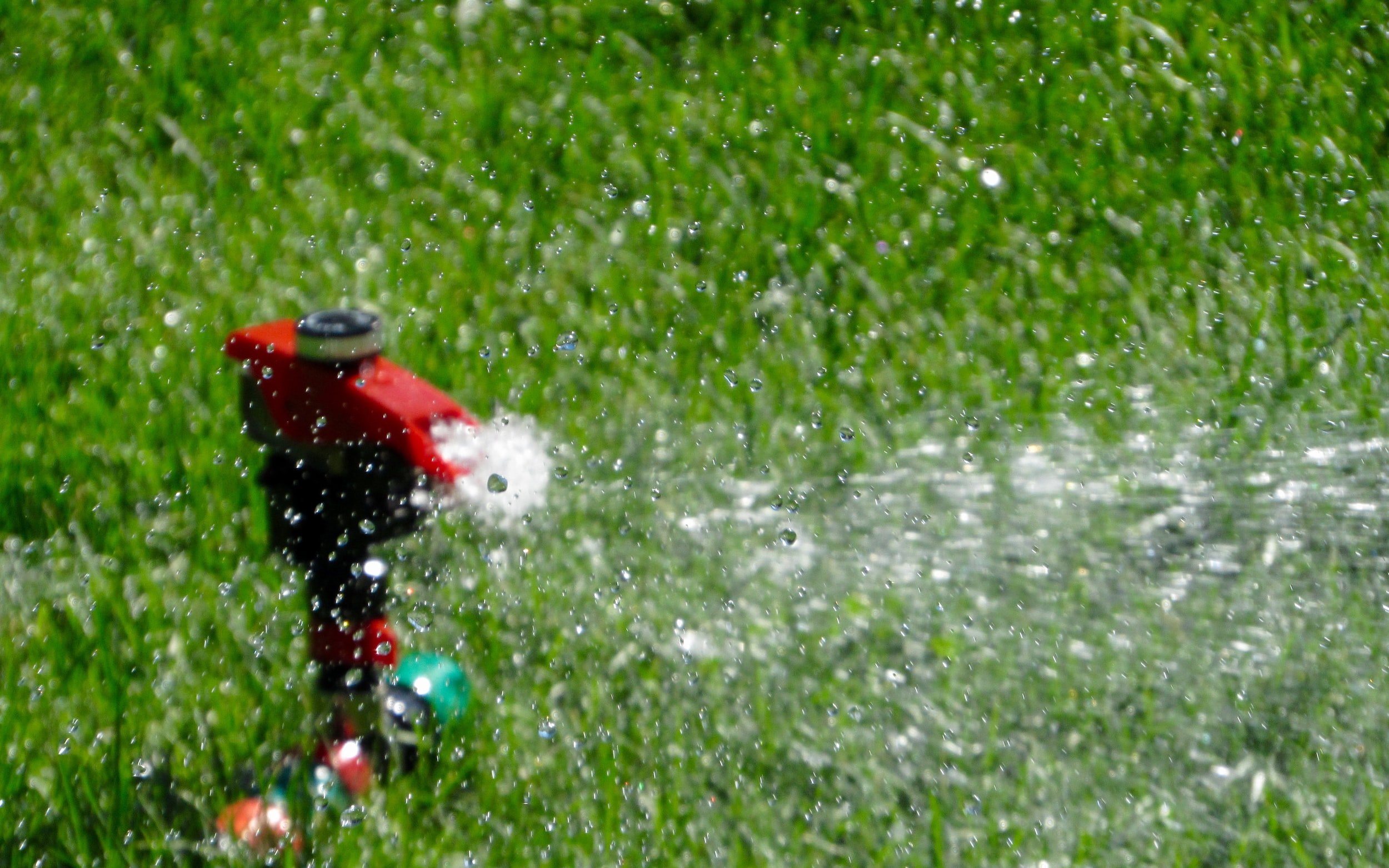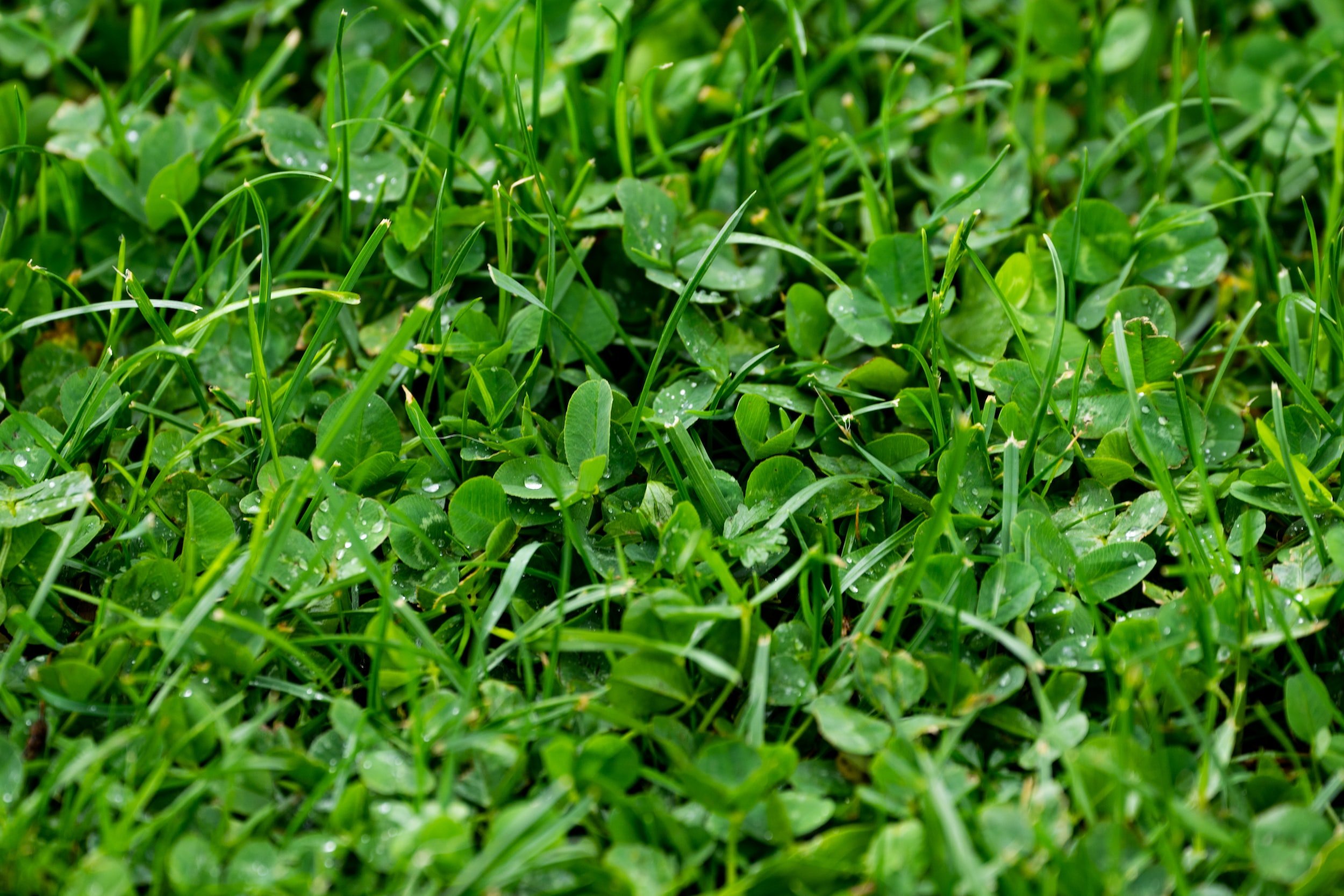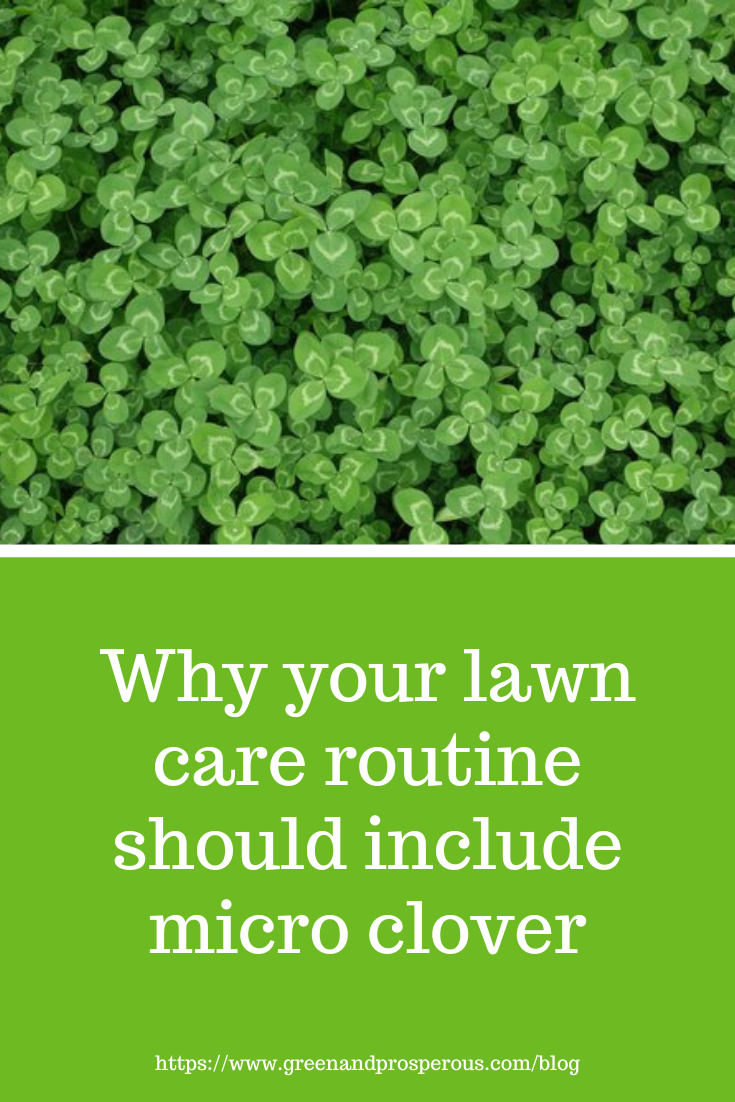Why your lawn care should include micro clover
/In much of the Northern Hemisphere, August is one of the hottest months of the year. As a result, many lawns are parched, with patches of brown and an overgrowth of hardy weeds scarring the landscape. Keeping a lawn green year-round is especially challenging this time of year; even more so if your area has seen a relentless onslaught of summer heat or drought conditions, or your city or municipality has placed restrictions on your use of water.
These challenges make maintaining a healthy, lush green lawn especially difficult, and many of you may be feeling frustrated, or ready to rip out your grass and install a rock garden or xeriscape instead, or you may have just given up altogether and resigned yourself to mowing your weedy lawn and forgetting about the other steps involved in lawn care.
If this any of these conditions describe your situation, then you might want to consider supplementing your lawn with micro clover to help it to grow healthier, greener, and able to withstand many of the environmental conditions that we are facing in this era of climate crisis.
Lawns consume an excessive amount of water
In the United States, lawns consume about 9 billion gallons of water each year, or roughly 15-20% of all household use. Europeans use considerably less water on their grass than Americans do, as many European homes have small lawns or forego them altogether, particularly in the more arid climates. Using so much water is ultimately unsustainable in an era when climate change has forced many of us to revise our use and abuse of natural resources. When you consider the fact that many lawns are watered from the top using sprinklers, which is the most wasteful watering method out there, the amount of water being used to maintain lawns seems even more excessive.
The perceived need for watering your lawn is heightened when you reseed bald patches, as new grass seed generally needs to be watered daily up to two weeks until it germinates. Overfertilizing with synthetic fertilizer (which can burn your lawn) compounds the problem if you use water to wash out excess fertilizer or rip out the burned grass and overseed. Ripping out weeds is also an occasion to overseed, which again leads to increased water usage.
Aside from overuse of water, homeowners and renters use gas-powered lawn mowers and blowers to maintain their yards, which accounts for more gas pollution per hour than driving multiple new gas-fueled automobiles in that same time frame. Many homeowners also use herbicides and synthetic fertilizers on their lawns, which end up in our water sources as a result of runoff. While some people have opted for more environmentally friendly maintenance tools such as drip irrigation hoses (which are more earth-friendly and help grass roots grow longer, thus enabling them to endure drought periods better), electric mowers and organic fertilizers, they still represent the minority. This means that aside from wasting a valuable natural resource, conventional grass lawns contribute massive amounts of pollution to the environment.
Adding micro-clover to your lawn and following some of the environmentally friendly maintenance practices noted above can help you have a lawn that will be the star attraction of your neighborhood!
What is Micro clover
Micro clover, sometimes called mini clover, is a dwarf variety of the Dutch white clover that is indigenous to Europe. It was first developed for use on golf courses in Denmark and the Netherlands. A perennial, it has much smaller leaves and fewer flowers than Dutch clover, and typically grows between 3 and 6 inches tall.
Because it germinates quickly (within 3-7 days), roots deeply in the soil – (even in compacted soil), grows in sunny or partly shady areas, and is drought tolerant and cold hardy, it makes a great companion to grass lawns. Some people even plant micro clover as an alternative to grass, although having a lawn comprised entirely of micro clover takes some careful planning and consideration and is a lot more expensive than integrating it into your existing lawn.
Advantages of Micro clover
Micro clover has many advantages over conventional grass seed: it is low maintenance, doesn’t need much fertilization, helps grass look greener faster and longer; helps suppress weeds, aerates the soil, and requires less water than grass lawns. It needs mowing only infrequently; and some people forego mowing it altogether, although this will cause the micro clover heads to eventually grow larger, so that they eventually grow to the normal size of Dutch clover.
One of micro-clover’s most attractive qualities is its ability to fix nitrogen in the soil. It does this through a symbiotic process with the soil bacteria that lives in nodes alongside its roots; this enables micro clover to pull nitrogen gas from the air and convert it to organic usable nutrients. It then shares this nutrient with the grass it’s planted with, improving the grass’s appearance and health.
While the initial seeding may require a significant expense, depending on the area needing to be seeded (1/2 to 1 lb of micro clover covers approximately 1000 sq feet when planted on its own), it is considerably cheaper to interplant with existing grass than to seed an area entirely with micro clover. It’s also cheaper than ripping up an existing lawn and reseeding with grass seed. Using stolons, or runners, which travel horizontally on the ground and produce new roots, nodes and leaves, micro clover interweaves with the existing grass, spreading evenly throughout your lawn.
How to Use Micro Clover
Micro clover is easy to use, even for beginners, when used to overseed an existing lawn or to fill in bald patches. Use it as a 3-5% mix if you’re combining it with an existing lawn.
Plant it when the temperature outside is warm, sprinkle with topsoil (even old soil will do the trick) and water daily to ensure its germination; it will typically sprout in 5 to 7 days after planting. After that, you shouldn’t need to water it more than 1-2 times a week at most.
You can opt to mow your micro clover, which is likely to be the case when interplanted with grass. If you do mow it, it can be ‘trained’ to grow to a shorter height than its max. For example, if it reaches a maximum height of 6 inches, mowing it will encourage it to put out new heads that grow only to a maximum height of 3 inches. In 100% micro clover lawns, you can opt to leave it unmowed; doing this will allow it to produce small flowers in the summer months, which provide food for bees and other pollinators.
Like this? Please pin!
Few Downsides to Using Micro Clover
There are a couple of caveats to using micro clover that you should also be aware of. First, although it is drought tolerant and cold hardy, some varieties will die back in the winter months, making a full clover lawn look unsightly until the weather warms up. Second, you can’t use broadleaf weed killers with it, as these herbicides will kill clover (after all, they are designed to kill weeds and leave grass intact).
Otherwise, adding micro clover to your lawn, or overseeding bald or dead patches with this plant can help you to not only have a beautiful lawn in the warm and cool months of the year, but will enable you to decrease your carbon footprint by reducing or even eliminating some of the harmful practices that typically go along with conventional lawn care.











































Gazing at bare patches in your lawn? You’re not alone. Those thin, ugly spots are such a pain. They can feel especially frustrating when the rest of your yard looks healthy. Whether they were caused by pets, heavy foot traffic, pests, drought stress, or poor soil conditions, bare spots have a way of showing up at the worst possible time.